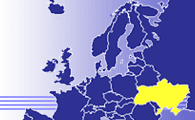Year of visa-free regime with EU: 15% more Ukrainians travel to Europe
June 11, 2018.
A year ago, on June 11 2017, the visa-free regime between Ukraine and the EU entered into force. This allowed Ukrainians with biometric passports to travel without visas to EU countries, except the United Kingdom and Ireland, and to the Schengen associated states – Iceland, Liechtenstein, Norway and Switzerland for a period of stay of 90 days in any 180-day.
On the occasion of the first anniversary of visa free travel, EU ambassador to Ukraine Hugues Mingarelli said: "Opening up visa free travel to the EU was a well-deserved moment for the people of Ukraine. One year after the visa liberalization, many Ukrainian citizens have already enjoyed their visa free travel. People from the EU and Ukraine are meeting each other more and more, which leads to better understanding, making new and renewing old friendships, and brings economic benefits too. While overall Ukrainian citizens are respecting the rules of the visa free regime, it is important that Ukraine continues the implementation of all benchmarks set out in their visa-liberalisation process."
The first year of visa-free travel showed substantial increase in the number of trips by Ukrainians to the EU. According to the State Border Guards Service of Ukraine, from the date of the entry into force of the visa-free regime until 11 June 2018, Ukrainians traveled to the EU countries 20.3 million times. This is 15% more compared to 17.7 million trips made during the previous 12 months.
Ukrainian citizens crossed the border with the EU using biometric passports 4.8 million times. Out of these, 555,000 times Ukrainians went to the EU with new biometric passports without visas and used all the advantages of the visa-free travel.
The Infrastructure Ministry of Ukraine offers more data: the number of passengers who took international train routes in the direction of the EU in 2017 increased 5.5 times to over 200,000 compared to 2016. Two new rail routes are planned to be launched to Hungary and Romania by the end of 2018. From 2015 to 2017, the number of Ukrainian low-cost airlines’ routes to the EU more than doubled and reached 38 compared to only 18 in 2015.
Visa-free travel to the EU countries opens new opportunities for the development of private entrepreneurship through new contacts, exchange of experience among professionals in various fields, communication and education of children and young people. The exchange of ideas, experience and knowledge speeds up Ukraine’s integration into Europe and improves the quality of life for Ukrainians.
Ukrainians view visa-free travel as the main political event of 2017, according to a public opinion poll by the Ilko Kucheriv Democratic Initiatives Foundation and the Razumkov Center. Ukrainian authorities, media and independent experts have repeatedly called the visa-free travel with the EU as Ukraine’s main achievement of 2017, alongside the entry into force of the EU-Ukraine Association Agremeent. The dictionary of modern Ukrainian language and slang "Myslovo" chose "visa-free" as the word of 2017.
The national communication campaign "Open Europe" about the rules, obligations and benefits of the visa-free regime with the EU countries also contributed to the year of visa-free travel. Over 20 million people from all over Ukraine have been informed how to properly prepare for a trip to the EU and what opportunities and obligations the visa-free travel brings. Over a year of the visa-free regime between Ukraine and the EU, the information website of the "Open Europe" project was visited by more than 575,000 people. The regularly updated website explains the rules and opportunities for visa-free travel: the role of a biometric passport for going abroad, terms of stay in the EU, opportunities for tourism, short-term training and business development.
More about EU programs and initiatives can be found on the website and the Facebook page of the European Union Delegation to Ukraine, and on the meta.ua portal in the "EU in Ukraine" section.
|




